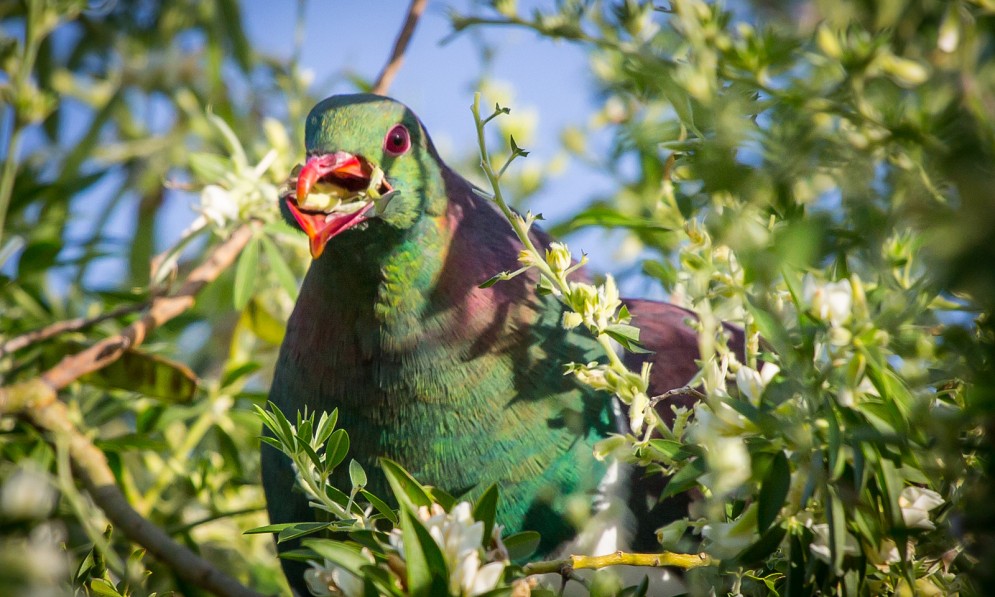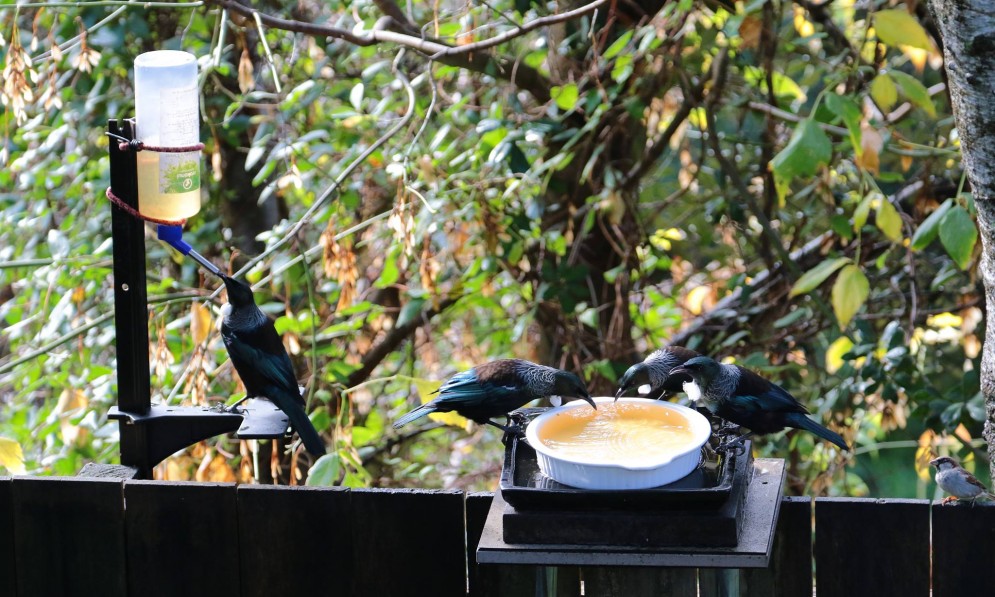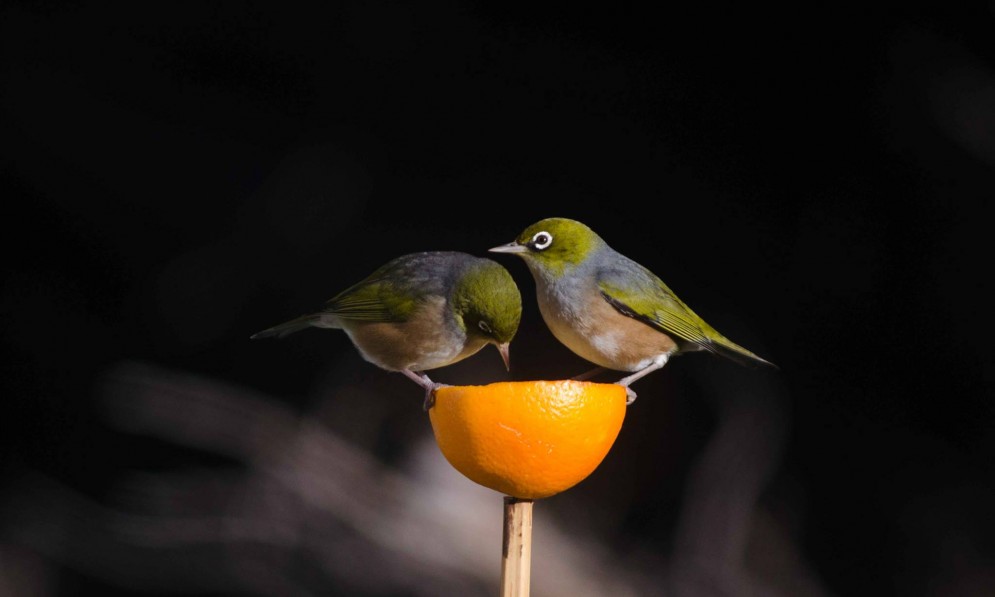You can attract native birds to your garden by setting up a feeding station.
Many of our native birds eat nectar, fruit, and insects. You can help supplement their food by setting up a sugar water or fruit feeder in your garden.
It can take a while for birds to get used to feeding at a sugar water or fruit feeder. Make sure feeding stations topped up regularly in winter and early spring when natural food sources are more limited.
Foods to avoid
- Seeds and grain. They attract introduced birds that out-compete natives.
- Bread. Birds are likely to become malnourished.
Bread, grain and seed feeding is associated with a high risk of pathogen transmission between birds and humans. - Milk. It can't be digested by birds and causes stomach upsets. Fermented dairy products such as cheese are okay.
- Honey or honey water. Never put out honey or honey/water for birds. Birds love it, so do bees. so this practice can spread bee diseases.
- Cooked oats or porridge. This can harden around a bird's beak. Uncooked oats are okay.
Keeping birds safe
Before you start feeding native birds, it is important to make sure your backyard is a safe place for them to visit.
- Set traps to control introduced predators like rats, stoats, and possums.
- Keep your cat inside, particularly at night.
- Put any feed stations well out of reach of introduced predators.
- Clean your feeder regularly to avoid the spread of disease.
- Provide water, particularly in summer, so birds are able to stay hydrated.
What should I feed native birds?
Native birds that you are likely to attract to your garden prefer to eat fruit, nectar, insects, and foliage. Common species and their preferred food are:
| Species | Nectar | Fruit | Foliage | Insects |
|---|---|---|---|---|
| Kākā | ✓ | ✓ | ✓ | |
| Kererū (wood pigeon) | ✓ | ✓ | ||
| Korimako (bellbird) | ✓ | ✓ | ✓ | |
| Kōtare (kingfisher) | ✓ | |||
| Pīwakawaka (fantail) | ✓ | |||
| Riroriro (grey warbler) | ✓ | |||
| Tauhou (silvereye) | ✓ | ✓ | ✓ | |
| Tūī | ✓ | ✓ | ✓ |
Native plants
Native plants and shrubs are the best way to attract native birds to your garden. Try growing species that provide nectar, seeds, and berries all year-round so birds always have food available to them.

Kererū (wood pigeons) prefer to eat the fruit and foliage of native plants. Credit: Chris Helliwell
Leaf litter
When leaves fall off your plants and shrubs, do not pick them up or relocate them. Over time, a thick layer of mulch will build up. This boosts insect populations, which provides a great food source for insectivorous birds.
Fruit
Try hammering some nails into a board and securing pieces of fruit to the table. Half-cut oranges, apples, and pears can attract tauhou (silvereyes), korimako (bellbird), and tūī, as well as kākā and hihi if they are present.
Sugar water
Sugar water is a great supplementary food for nectar-loving birds like tūī, korimako (bellbirds), and kākā.

Sugar water is a great way to supplement food for nectar-loving birds like tūī. Credit: Anna Arrol
To make sugar solution, dissolve half a cup of sugar in four cups of water. The best sugar to water ratio is 1:8. Anything higher may attract bees and wasps or start to ferment more quickly.
You can leave sugar water in a shallow dish or make a feeder using household items.
To make a sugar feeder, take a one-litre milk bottle and attach the lid to a shallow dish or jar lid. Fill the milk bottle with sugar water and make a few small holes about half a centimetre from the bottom of the bottle. Screw it into the lid and turn the dish upside down. Sugar solution will come out of the bottle and fill the dish to the height of the holes.

